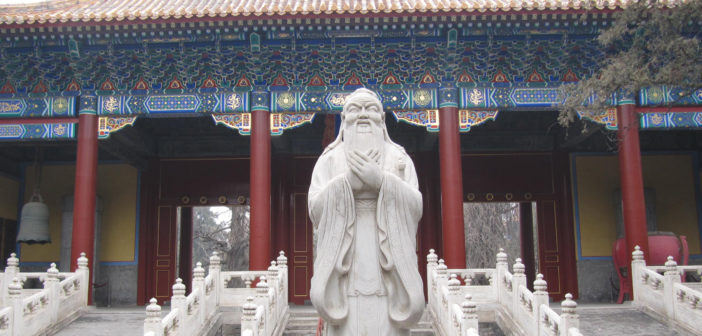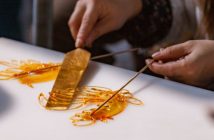When you live in Beijing, busy with the daily grind of work and school, it’s easy to forget that this is a historic city, with attractions which draw people from all across the world. It’s important to take time to sample what the city has to offer. The advantage of living here though is that you can move past the obvious tourist traps, like the Great Wall and the Forbidden City, and discover some of the less well known, but fascinating and less crowded, sights of Beijing.
To help us discover some of these hidden gems we talked to April Peng, Primary Chinese Coordinator at Yew Chung International School of Beijing (YCIS Beijing). Peng leads the China Studies program at the school, and brings local expertise to the subject.
“I am a native of Beijing,” she told us. “I was born in Dongcheng District, which is the authentic ‘imperial roots’ area. Beijing is the place where I grew up, I studied here, worked here, got married here, had a child here. I’ve gone through changes, but I’ve also witnessed the rapid changes taking place in Beijing every day. Over the years, Beijing people have become more and more welcoming to guests from all over the world. Beijing has modernized, with more skyscrapers, improvements in science and technology, and transportation is becoming more and more efficient.”

April Peng loves to share Chinese culture with her students
Peng’s pride in her hometown underpins her enthusiasm for the subject she teaches.
“China’s 5,000 years of history, art, technology, culture, architecture, literature, and cuisine are all worthwhile topics for students to savor and enjoy. Furthermore, not only do teachers help students understand Ancient China, they also provide students with opportunities to learn about Modern China. Through understanding the changes that Chinese culture has experienced, students also are able to understand the deeply-rooted strands of heritage and culture that still exist in the minds of Chinese people and how they are embodied in the changes happening in China today.
“In the YCIS Beijing China Studies Programme, teachers use a wide variety of methods, including videos, music, dancing, performance, and other activities to enrich students’ understanding of Chinese culture. Teachers also take students to visit historical sites in person, allowing students to gain a deeper understanding of culture through these experiences. Chinese teachers themselves are also highly effective ambassadors of Chinese culture!”
Peng picked out three hidden gems for us: a historic seat of learning, an ancient temple, and a traditional street full of old-fashioned shops.
The Beijing Confucius Temple and the Imperial College are located on Guozijian street in Dongcheng district – Guozijian actually means “imperial college”.
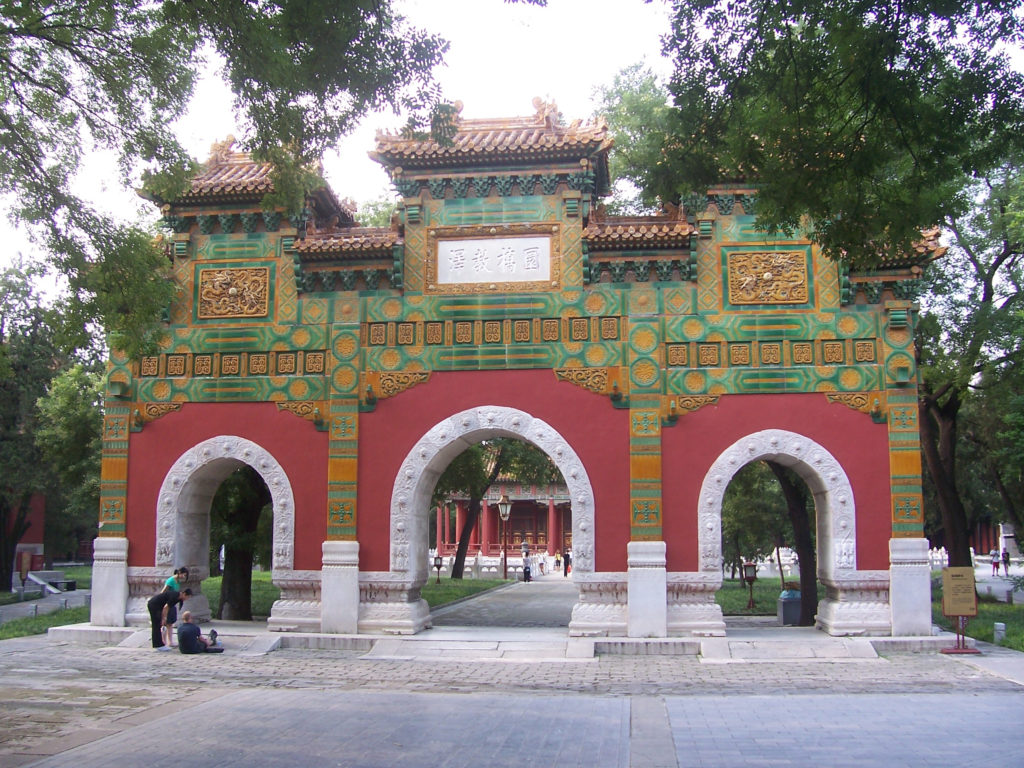
Guozijian Gate
“It was built under the Yuan Dynasty, in the 14th century,” Peng said, “and has a long history of over 700 years. The two groups of buildings constitute a pair, with ‘the Confucian Temple on the left and the Imperial College on the right’ according to tradition.
“The massive archway at Guozijian is the only such archway constructed solely in honor of learning. The archway contains 13 eaves atop the structure, four pillars, and three entryways. Each section of the archway is meticulously crafted. The white marble banner at the center of the archway on either side contains calligraphy handwritten by Emperor Qianlong. On either side of the top of the archway is a finely carved engraving of two dragons playing with a pearl; viewing it from the ground, the coiled golden dragons appear to be bursting forward. The entrances to the archway also feature white marble carvings around them. Encircled by beautiful flowers and plants, it’s a very worthwhile place to visit.”
Tanzhe Temple is some distance from the center of Beijing, but makes for an enjoyable day out, as Peng told us.
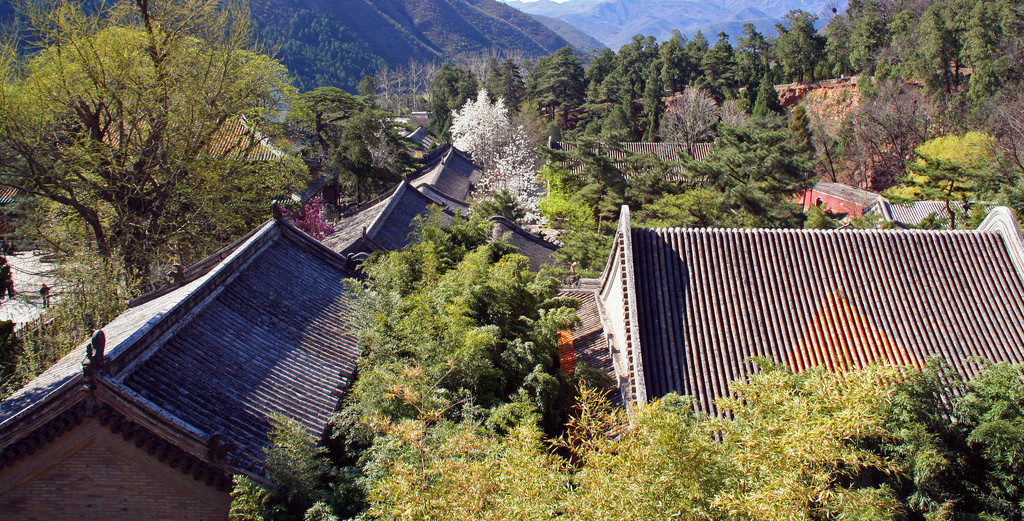
Tanzhe Temple is surrounded by forests and mountains
“Tanzhe Temple is located in Beijing’s Mentougou district in the Tanzhe foothills,” Peng told us. “With a 1700 year history, it is Beijing’s oldest ancient monastery. It’s said that ‘First there was Tanzhe Temple, then there was Beijing.’ The monastery grounds are filled with the smell of burning incense, towering old trees, numerous pagodas, and magnificently well-proportioned architecture, with beautiful stands of green bamboo and flowers scattered across the area. It makes for incredibly beautiful scenery. Besides the ’10 Scenic Locations’ within the temple grounds, I’d like to strongly recommend Tanzhe Temple’s famous ‘Stone Fish.’”
“To the west of Guanyin’s Hall is the Stone Fish’s Hall. Under the eaves on the left side of this hall hangs a five-foot long black and green stone fish. Tapping on different parts of the fish will emit different sounds, just as if you were playing an instrument. According to legend, the stone fish possessed mystical power; for instance, if one of the ancient provinces was experiencing a drought, one only needed to knock on the corresponding section of the fish to bring rain to that province. If a person was sick or injured, they could rub the part of the fish corresponding to the affected body part and they would be cured. If you visit Tanzhe Temple, definitely take the opportunity to visit this fish and learn more about the legend!”
Liulichang is easier to get to, lying just south of Hepingmen station on subway line 2.
“This is the oldest street in Beijing,” Peng said. “It is filled with quaint shops selling art and calligraphy related products, antiques, curios and old books. There are also tea shops selling tea and teapots, and galleries selling paintings and scrolls.”
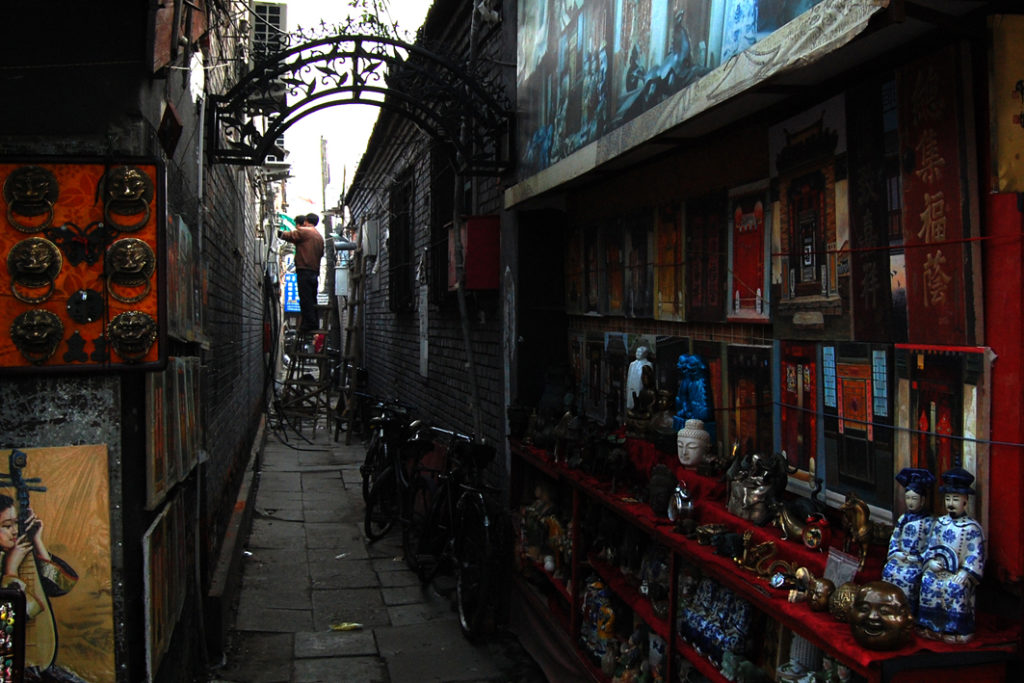
Liulichang, Beijing’s oldest street
But there are many other other fabulous places to visit in the city, according to Peng.
“Beijing is a city that will not let you down,” she said. “The history and culture here are most attractive. Visit the hutongs, to experience the architecture of old Beijing. Look at the monuments to explore the civilization. Visit old and famous shops (the ‘Lao Zi Hao’), the Temple Fairs, the antique markets… Beijing opera, tea houses, they’re all great choices for families.”
 This post is sponsored by YCIS Beijing
This post is sponsored by YCIS Beijing
Photos courtesy of YCIS Beijing, Paul Munhoven via Wikimedia Commons, Ivan Walsh, Gill Penney, & Antoine Lacroix (Flickr)

